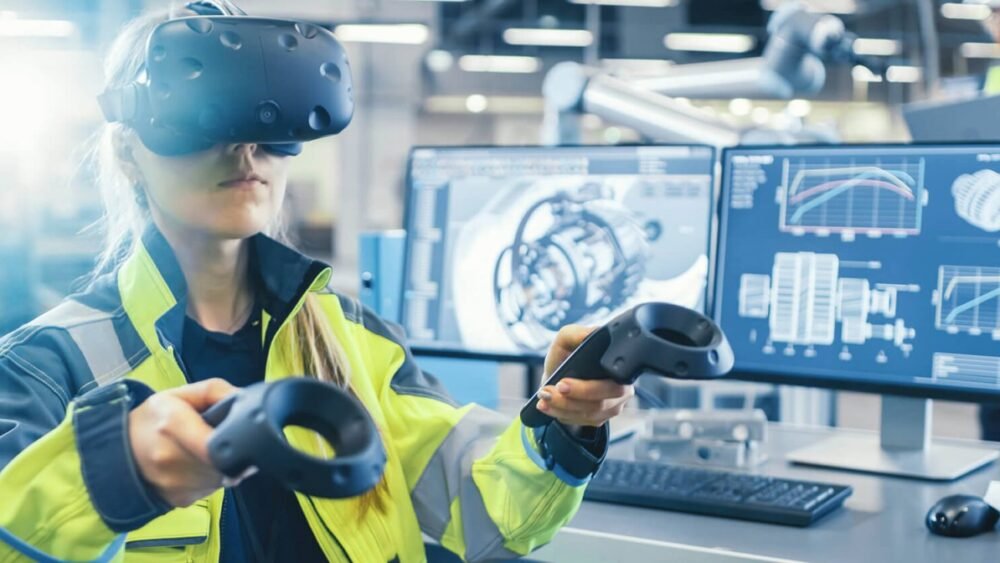A Balanced Approach for Children with Special Needs
During a conversation with a team of VR specialists, I was amazed by how they incorporate human engineering concepts into their practice to minimize the potential negative impacts of technology. Their approach emphasizes human-centred design, aiming to benefit special-needs children.
This interaction sparked my curiosity about researching Human Engineering, specifically on balancing the influence of technology on children or young people with special needs, such as autism or neurodivergence. Here are some insights from my research.
- The Importance of Human Engineering in Special Education
Human Engineering or human factors engineering is the design of systems and environments for optimal manufacture, usage, and effectiveness of the human being. In special education, the design is about a learning space that is singular and will satisfy the needs of every child. Without these considerations, technology may run amok and become something that these children with special needs cannot overcome to develop.
- Virtual Reality: Opportunities and Challenges
Virtual reality provides immersion and high customizability in environments and thus is of great benefit to children with special needs. Without proper application of human engineering principles, VR technologies could equally hold risk for the children in terms of sensory overload, lack of physical activity, and social isolation.
- Prospective Advantages of VR for Children with Special Needs
- Personalized Learning Experiences: VR can cater to individual learning formats best suited for various learning styles and paces. For example, a child with autism spectrum disorder will be able to work through interactions at his/her own pace in a controlled environment, leading to less anxiety about real-world situations.
- Engagement: VR tends to be so immersive that it keeps children engaged and motivated. In turn, this helps even children with ADHD, who might find it hard to concentrate using conventional learning modes.
- Safe Learning Environments: It allows children to explore and learn without real-life consequences. They become more confident in taking risks.
- The Risks of Technology Overuse
While technology certainly has its positive points, an overreliance on it could prove detrimental, especially to neurodivergent children. The following are some disadvantages:
- Sensory Overload: VR environments can become overwhelming for some children and hence cause an increase in sensory overload.
- Health Concerns Related to Physical Matters: Excessive use of VR may lead to physical health issues, such as eye strain or even reduced physical activities.
- Social Isolation: Excessive screen time may result in a decline in face-to-face interpersonal interaction, which is necessary for social development.
- Responsible VR Use Strategies
- Scheduled VR Sessions: When the use of VR is pegged at a given time or times of the day, it ensures that children engage in physical activity and interact with others outside of the VR environment.
- Physical Involvement with Activities: Engage in activities that get learners to physically take part to avoid sedentary status and possibly gain health benefits.
- Involvement of Caregivers: For example, parents and special educators can be part of VR sessions to give real-world context to the learner and for support.
- Applications and Success Stories
Already, products like “Learning Room” from Metaverse 911 are being employed in which virtual reality technologies are coupled with training children with ASD in social skills in India. After these programs, human engineering principles are at play here: a balance is struck between V.R. use and real-world interactions. It is clear from feedback that social engagement has improved while anxiety has been reduced results of the potential of responsible VR use.
Conclusion
The appropriate and safe utilization of virtual reality in special education should primarily include the infusion of human engineering principles into the solution. This can be done by balancing the use of technology and focusing on safe and personalized learning environments to make the most out of what VR has to offer while also preventing the potential detriments. A balanced approach such as this will promote effective learning and appropriate overall development among children with special needs, thus ensuring better educational and life outcomes. In the absence of this kind of careful consideration, technology can potentially do more harm than good, underscoring the critical need for a thoughtful, human-centred approach.
We at Human Factor are excited to bring this technology to our clients very soon.
By:
Tanu Gupta
Founder & CEO
Human Factor
Can be reached at tanu.gupta@hfactor.in


